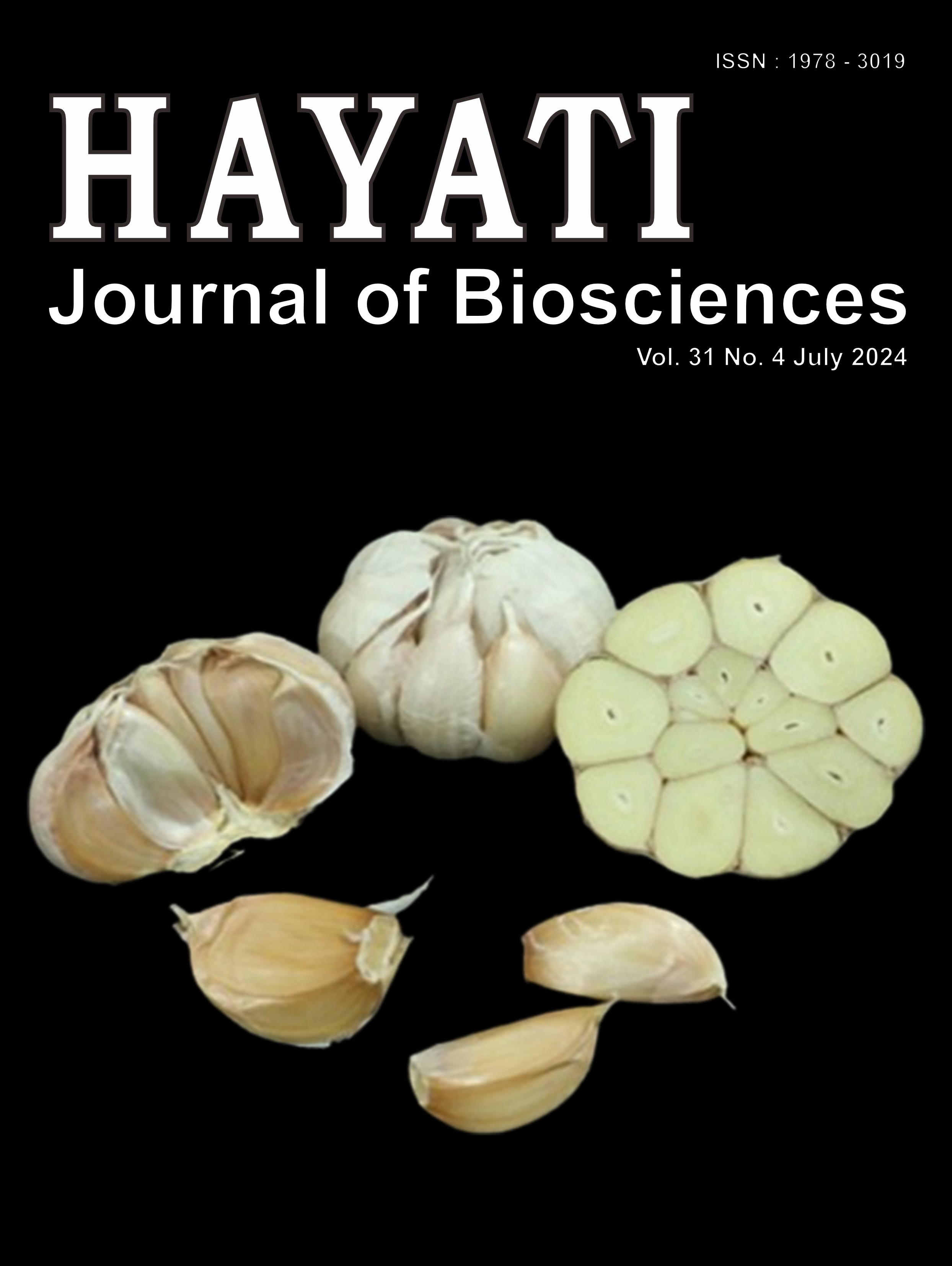Apis cerana Fabricius, 1793 in Sumatra: Haplotype Variations of Mitochondrial DNA and the Molecular Relationship with the Asian Honey Bees (Hymenoptera: Apidae)
Abstract
Honey bee Apis cerana is widely distributed in Asia and the Indonesian archipelago, including Sumatra. We studied the molecular variations of A. cerana using cytochrome c oxidase subunits 1 and 2 genes (cox1 and cox2) and the cox1/cox2 intergenic spacers (igs) in several altitudes in the six provinces of Sumatra. We explored the haplotype distributions of those three mtDNA markers for A. cerana in the low-, mid-, and highlands of Sumatra. We also analyzed their relationship with A. cerana in Sundaland and Asia using those markers. Our study revealed 12 new haplotypes of A. cerana cox1 in Sumatra, while nine and eight new haplotypes for cox2 and igs, respectively. Apis cerana in North Sumatra, Lampung, and South Sumatra had the three highest haplotype variations. Most of the specific haplotypes of inter-colony A. cerana from Sumatra were found in the lowlands, while most were in the highlands for intra-colony variations. We found low gene flow among populations of A. cerana in Sumatra. One haplotype, Sumatra4 cox2 from North Sumatra, was the same as Java3 haplotype, presumably due to anthropogenic impact. The molecular phylogenetic tree of A. cerana in the Sundaland revealed that A. cerana from Sumatra has a close relationship to those of Borneo compared to Java.
Downloads
Copyright (c) 2024 Juniarto Gautama Simanjuntak, Windra Priawandiputra, Rika Raffiudin, Nurul Insani Shullia, Jauharlina Jauharlina, Mahardika Gama Pradana, Araz Meilin, Jasmi Jasmi, Yulia Pujiastuti, Puji Lestari, Rustem Ilyasov, Rahmadi Sitompul, Tri Atmowidi

This work is licensed under a Creative Commons Attribution-NonCommercial 4.0 International License.
HAYATI J Biosci is an open access journal and the article's license is CC-BY-NC. This license lets others distribute, remix, tweak, and build upon author's work, as long as they credit the original creation. Authors retain copyright and grant the journal/publisher non exclusive publishing rights with the work simultaneously licensed under a https://creativecommons.org/


















.png) IPB University
IPB University Department of Biology
Department of Biology The Indonesian Biological Society
The Indonesian Biological Society 

